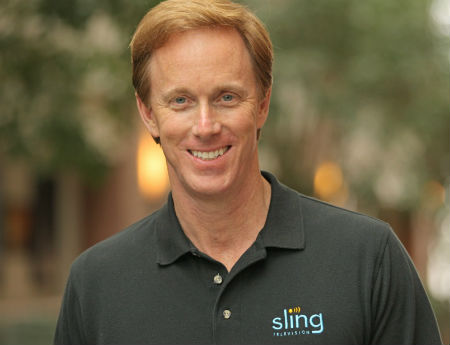Sling TV to Add Broadcasters 'When They're Ready'

New York -- During a keynote appearance at Wednesday's Next TV Summit at NYC Television Week, Sling TV CEO Roger Lynch said the Dish-owned "skinny bundle" service expects to add broadcast networks to its lineup, but not in the short term. "It's a complicated market," he said during a wide-ranging discussion. "To some extent, [networks] aren't ready."
Lynch noted that they hoped to eventually have the local stations but stressed they didn’t want to create a bundle that was too expensive by paying too much for them and that in many ways the broadcast community wasn’t ready to negotiate those kinds of deals.
“ABC can’t do it,” meaning negotiate a national agreement because of all the local affiliate agreements, Lynch said. “Over time, local is something we will offer. But to a certain extent they are not ready”
He also stressed that the deal with broadcasters or any other programmer would have to be priced appropriately. “We are not going to create a bundle that will cause us to miss market,” by paying too much for channels, he said. “We could have launched the service a few years ago but it would have been a big pay TV bundle” and that would have missed the market they were targeting.
Lynch made the comments during a keynote at the Next TV event during NYC Television Week hosted by Multichannel News and B&C that was moderated by Jeff Baumgartner, Editor, Next TV, and Technology Editor at Multichannel News.
During the session, Lynch noted that “pay TV is at a tipping point,” and discussed the experience since the service launched, making a number of important points about how “skinny bundles” and OTT subscription services like Sling TV were moving into the market.
Lynch explained that the pay TV industry was mature but had not seen a segmentation of its services and that were was very little difference in services between major providers. “A lot of that is driven by programming agreements,” he said. “They are required to offer the same channels” and “there is very little difference in term of how it is packaged and priced.”
Multichannel Newsletter
The smarter way to stay on top of the multichannel video marketplace. Sign up below.
Services like Sling TV were starting to segment the market to “reach a growing segment of viewers” who found traditional pay TV service too expensive or not mobile enough.
“Over the air is growing and the growth in antenna sales is correlated with cord cutting,” he said.
Lynch provided no subscriber numbers but said Sling TV was very happy with the growth. “When we created the service a year ago we weren’t sure how much demand there would be for a service that didn’t have the major broadcasters, but we now know there is a lot of demand,” he said.
Since launch, Lynch noted that the subscriber profile had remained generally consistent, attracting cord cutters, cord nevers and a surprising number of people who already have a pay TV service. “Why they do it I don’t know….but it is not an insignificant segment,” he said.
The service over-indexed among millennials but it was mostly gaining traction among those in the 23 or 24 year group and older. “Before 22, they are not interested in pay TV,” he said.
Since launch, Lynch noted that one of the key priorities has been to expand the on demand portion of the offering and that this content was likely to become more important in the future. “We now have tens of thousands of on-demand titles,” he said, adding that live viewing would increasingly be on sports and other important live events.
One of the other priorities continued to be on the technical infrastructure and on improving addressable-advertising capabilities. “It is a big opportunity,” he said, noting the higher CPMs for targeted advertising.
The initial focus, however has been a created a good experience for dynamically inserted adds. “We are really at beginning,” he said. “It has been one of toughest things technically” they’ve faced.
When asked about the FCC proposal to classify over-the-top providers as MVPDs so they would have better access to content, Lynch expressed mixed feelings. “It could be a benefit but I worry about unintended consequences.”
Lynch noted that he joined Dish and EchoStar six years ago and that the Sling TV services has been in the works for some time. After being able to negotiate deals with programmers, the company switched its focus and launched an OTT service of international channels about three and a half years ago.
